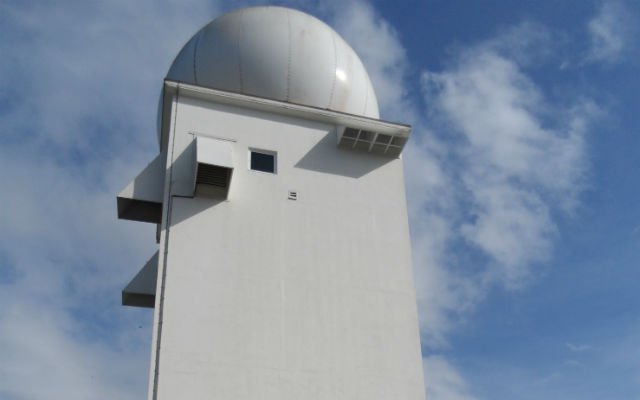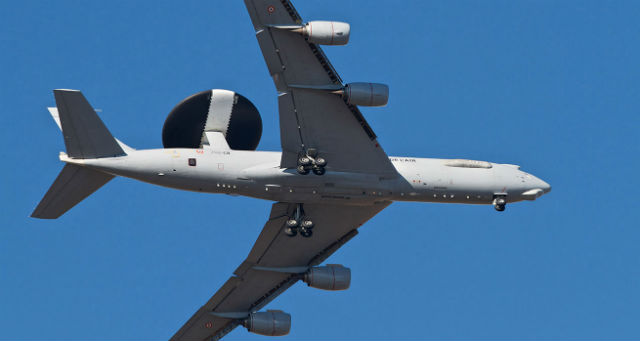An air base in Cayenne, French Guiana has become the first French site to bolster its air defence and surveillance capability with the ThalesRaytheonSystems Ground Master 406 "Calypso" radar, following the unit’s inauguration on 27 November.
Of the four systems on order for France, the Cayenne unit was the first to become operational, as the French overseas territory looks to strengthen its defence in the Latin American region and tackle a series of threats common to the area.
Prohibited fishing and gold mining incidents are prevalent, as are illegal immigration and unlawful flying.
French air base 367, which includes the military control centre in Kourou, now hosts the GM406 radar that covers French Guiana, plus neighbouring Suriname to the west and northern Brazil to the south.

Beth Stevenson/Flightglobal
Col Jean-Paul Besse, commander of the air base, explains that French airspace policy applies in the region, and it is a priority for the overseas territory to have a quick reaction air capability should it be required.
In mainland France four quick reaction bases can deploy two fighters – either the Dassault Mirage 2000 or Rafale – within 7min of notification.
“This gives us a strategic advantage. We have the same capability here – we’re in France and protecting airspace is the priority,” Besse tells Flightglobal.
The reaction time is not quite as quick in French Guiana, as it is primarily helicopters that are based in the country. However, if required, fighters can be called up from France and arrive within 8h under Operation BUBO.
“Any time we need more aircraft and need to extend the area of operations I ask for one [Boeing] E-3F and four fast jets,” Besse says. This provides a four- to five-time increase in capability against threats in the territory.

French air force
The GM406 is a strategic extension of air coverage in French Guiana, offering surveillance of low- to high-level threats. The preceding radar did not offer coverage of low-flying aircraft, which was required due to a prevalence of small light aircraft operating in the area.
“We bought this in in order to optimise all segments of airspace,” Besse says.
Surveillance is typically carried out by five Airbus Helicopters AS555 Fennec rotorcraft – with a marksman option for offensive measures – that are based in French Guiana. The fleet will work with the radar to provide a network of systems for air surveillance coverage – in particular low-level identification.
Information gathered by the GM406 will be fed to the command and control centre at Kourou air base, which is then sent to the national air operations centre in Lyon.
Besse adds that an unarmed unmanned air vehicle capability would be beneficial, particularly for some of the coastal surveillance tasks – specifically a medium-altitude, long-endurance (MALE) type. The French air force is in the process of acquiring its fleet of General Atomics Aeronautical Systems MQ-9 Reapers, some of which are operating on French missions against insurgents in Mali.
Although Besse did not go into detail about specific systems or deployments to Guiana, he says “any MALE UAV would be beneficial” in the region.
Meanwhile, representatives of both the Mexican and Brazilian militaries were present at the radar inauguration – a sign both of interest in the surveillance capability and a pointer to increased co-operation in the region.
A technical agreement was signed between Brazil and French Guiana two weeks ago under which both parties will share surveillance information. Both face the problem of illegal fishing and gold mining, and illegal flights into the country are a particular issue for Brazil.
Gen Philippe Adam, chief of military operations in French Guiana, says an exchange between Brazil and France has been on the government’s agenda for some time, with French President François Hollande having visited Brazil 12 months ago.
“We are in another era with this exchange,” Adam adds. “We will work together to exchange the required information.”
He says as illegal flights are a particular problem for Brazil, the new French radar will be able to alert the nation on non-cooperative parties that fall under the radar’s spectrum.
Mexico’s interest at present, meanwhile, is primarily about training and educating Mexican forces, Adam adds.
Of the other French GM400 family of radars, one will be delivered to Lyon and one to Nice – the next to be delivered once the site is completed. The fourth will be a mobile unit initially based out of Nice.
ThalesRaytheonSystems says 36 GM400-family radars have been contracted in 10 countries, with buyers including Canada, Estonia, Finland, Germany, Malaysia and Slovenia. This leaves three nations unaccounted for, but it is believed that Chile and Morocco have also contracted for the ground-based radar.
Source: Flight International



















